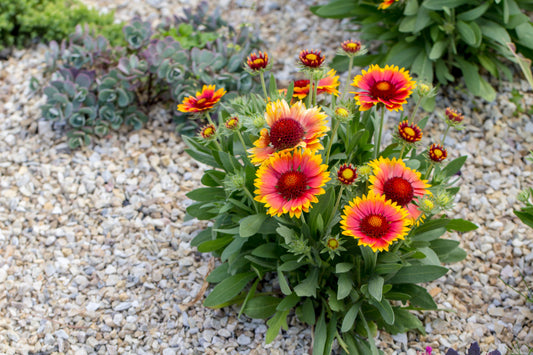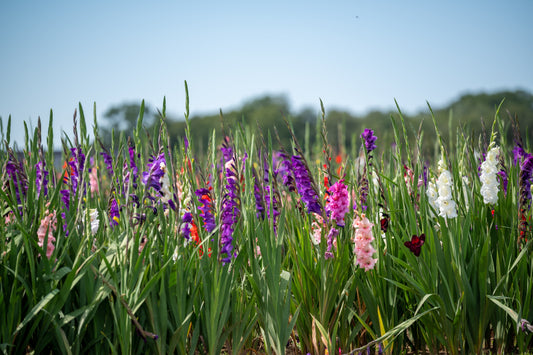Astrantia Planting & Growing Guide
Planting Guide Information
-
1"Planting Depth
-
18-24" ApartPlanting Proximity
-
SpringPlanting Season
-
They thrive in partial shade, perfect for woodland garden settings and they attract pollinators.Plant Benefits
-
ModerateWater Quantity
-
Early Summer through FallBloom Season
-
Partial SunSunlight Quantity
-
Zones 4-7Hardiness Zones
Additional Growing Information
Where to Plant
Astrantia is a very adaptable plant that will grow well in full sun, given plenty of water, or in full shade, where the foliage is lush and the blooms are sparse. Ideally, these bountiful blooms should be planted where they will receive a few hours of morning light, with dappled shade the rest of the day. While Astrantia easily withstands the harsh winters of the north and midwest and a wide range of growing conditions throughout the country, it does not fare well with the south's combined heat and humidity. Additionally, they tolerate heavy clay soils but prefer slightly acidic, rich, loamy soils that retain moisture but drain off standing water. They're perfect for mass plantings and remarkably easy to grow in containers as well!
When to Plant
Bare root Astrantias are best planted in the early spring or early fall. They typically bloom profusely from early to mid-summer right through to early fall, dying back naturally in the winter.
How to Plant
- Find a location where your Astrantia will receive a few hours of morning light, with dappled shade the rest of the day. For the best growth and performance, Astrantia should be planted in partial sun or dappled shade. Make sure there is a little extra room as Astrantia clumps will slowly spread out as they mature.
- Dig a hole and plant your bare root Astrantia in slightly acidic, rich, loamy soil that retains moisture but drains off standing water with the crown 1/2 to 1" below the surface and the roots spread out.
- Fill in the hole with loose soil and avoid packing it down too tightly.
- Water well after planting to gently soak the soil and settle it around the roots.
How to Grow
- Water regularly and thoroughly to support a reasonably even soil moisture. Astrantia will not survive sustained periods of dry soil.
- Apply a layer of mulch to your newly planted roots to help maintain even moisture.
- Deadhead or remove spent blooms to encourage continued bloom production throughout the season.
Astrantia Tips & Tricks
- Incorporate compost, dried leaves, even used coffee grounds into your soil for more organic nutrients. Coffee grounds will also add enough acidity to the soil for your Astrantia to be perfectly happy.
- Feel free to snip the flowers when in bloom for long-lasting bouquets.
- Expect your Astrantia to shrug off the winter blues and be ready to grow and bloom the following year.
- Dry the clusters of colorful, intricate blossoms for beautiful winter interest.
- Dig up and divide Astrantia clusters every 4–5 years.
From the Family
-
 15% OffPreorder
15% OffPreorderAstrantia - Sparkling Stars Mix
3 bare root Astrantia PlantsRegular price $32.26Sale price $32.26 Regular priceUnit price per$37.9515% OffPreorder -
 15% OffPreorder
15% OffPreorderAstrantia - Abbey Road
1 bare root AstrantiaRegular price $11.01Sale price $11.01 Regular priceUnit price per$12.9515% OffPreorder -
15% OffPreorder
Astrantia - Star of Beauty
1 bare root AstrantiaRegular price $11.01Sale price $11.01 Regular priceUnit price per$12.9515% OffPreorder -
 15% OffPreorder
15% OffPreorderAstrantia - Roma
1 bare root AstrantiaRegular price $11.01Sale price $11.01 Regular priceUnit price per$12.9515% OffPreorder -
15% OffPreorder
Astrantia - Star of Billions
1 bare root AstrantiaRegular price $11.01Sale price $11.01 Regular priceUnit price per$12.9515% OffPreorder






